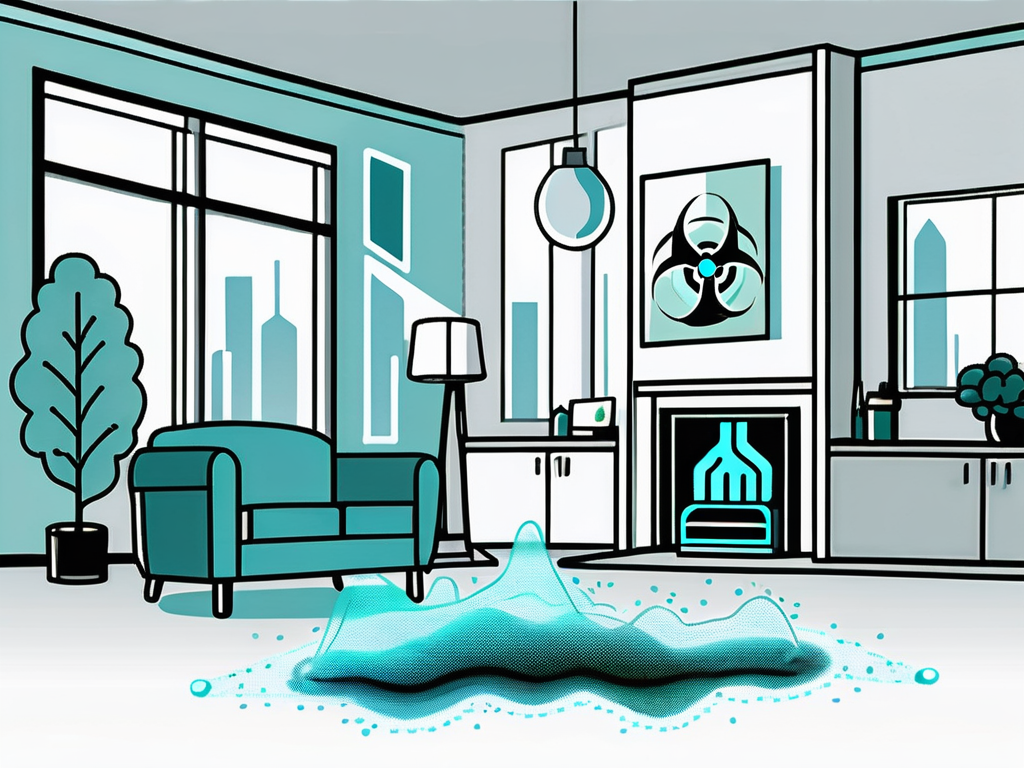Indoor air quality is a critical aspect of our everyday lives, yet it is often overlooked. The air we breathe indoors can be contaminated with a variety of chemicals that can have significant impacts on our health and wellbeing. This glossary entry will delve into the world of chemical contaminants in indoor air, providing a comprehensive understanding of this complex topic.
Chemical contaminants in indoor air can come from a variety of sources, including household products, building materials, and outdoor pollution. These contaminants can cause a range of health effects, from minor irritations to serious illnesses. Understanding these contaminants and how they affect indoor air quality is crucial for maintaining a healthy indoor environment.
Types of Chemical Contaminants
There are numerous types of chemical contaminants that can affect indoor air quality. These can be broadly categorized into volatile organic compounds (VOCs), semi-volatile organic compounds (SVOCs), and inorganic compounds.
VOCs are chemicals that easily evaporate at room temperature, and are commonly found in products like paints, cleaning supplies, and air fresheners. SVOCs, on the other hand, do not evaporate as easily and are often found in materials like plastics and flame retardants. Inorganic compounds include substances like radon, carbon monoxide, and lead, which can come from various sources including building materials and outdoor air pollution.
Volatile Organic Compounds (VOCs)
VOCs are a large group of chemicals that are found in many products we use in our homes. These chemicals can be released into the air during use or even during storage. Common sources of VOCs include paints, varnishes, wax, and many cleaning, disinfecting, cosmetic, degreasing, and hobby products.
VOCs can cause a range of health effects, depending on the type of VOC and the level of exposure. Short-term exposure can lead to symptoms like headaches, dizziness, and irritation of the eyes, nose, and throat. Long-term exposure can lead to more serious health problems like damage to the liver, kidneys, and central nervous system, and some VOCs are known to cause cancer in humans.
Semi-Volatile Organic Compounds (SVOCs)
Semi-volatile organic compounds (SVOCs) are a subset of VOCs that have a higher molecular weight and lower volatility. They are often used in building materials, furnishings, and consumer products. Common SVOCs include phthalates, which are used in plastics, and polybrominated diphenyl ethers (PBDEs), which are used as flame retardants.
SVOCs can also have significant health effects. For example, phthalates have been linked to hormonal disruptions and reproductive health problems, while PBDEs have been associated with neurodevelopmental issues in children. However, the health effects of many SVOCs are still not fully understood, and more research is needed in this area.
Sources of Chemical Contaminants
Chemical contaminants can come from a variety of sources, both inside and outside the home. Inside the home, common sources include household products, building materials, and activities like cooking and cleaning. Outside the home, contaminants can come from sources like traffic pollution, industrial emissions, and natural sources like radon.

It’s also important to note that the levels of chemical contaminants in indoor air can vary greatly depending on factors like ventilation, temperature, and humidity. For example, VOC levels are often higher indoors than outdoors, due to the use of VOC-containing products and materials in homes and the relatively low levels of ventilation in many indoor environments.
Household Products
Many household products can release chemical contaminants into the air. For example, cleaning products, air fresheners, and personal care products often contain VOCs that can evaporate into the air. Similarly, materials like carpets, furniture, and paints can release VOCs and SVOCs over time.
It’s also worth noting that some products can release contaminants when they are used, while others can release contaminants even when they are stored. For example, a can of paint can release VOCs into the air when it’s open, but it can also release VOCs when it’s closed and stored away.
Building Materials
Building materials can also be a significant source of chemical contaminants. For example, materials like plywood, particleboard, and insulation can release formaldehyde, a type of VOC, into the air. Similarly, materials like vinyl flooring and PVC pipes can release phthalates, a type of SVOC.
In addition, some building materials can release inorganic compounds into the air. For example, materials like granite and concrete can release radon, a naturally occurring radioactive gas that can cause lung cancer. Similarly, lead-based paints, which were commonly used in homes built before 1978, can release lead dust into the air.
Health Effects of Chemical Contaminants
The health effects of chemical contaminants in indoor air can range from minor irritations to serious illnesses, depending on the type of contaminant and the level of exposure. Some people may be more susceptible to these effects than others, due to factors like age, health status, and genetic factors.

Common health effects of chemical contaminants include irritation of the eyes, nose, and throat, headaches, dizziness, and fatigue. These effects are often associated with exposure to VOCs and can occur shortly after exposure. However, some people may not experience these effects until after repeated or prolonged exposure.
Long-Term Health Effects
Long-term exposure to chemical contaminants can lead to more serious health problems. For example, long-term exposure to VOCs can cause damage to the liver, kidneys, and central nervous system. Some VOCs, like benzene and formaldehyde, are also known to cause cancer in humans.
Similarly, long-term exposure to inorganic compounds like radon and lead can also have serious health effects. Radon is the second leading cause of lung cancer after smoking, while lead exposure can cause a range of health problems, particularly in children, including developmental issues, learning difficulties, and behavioral problems.
Sensitive Populations
Some populations are more sensitive to the effects of chemical contaminants than others. For example, children are often more susceptible to these effects due to their developing bodies and because they breathe more air relative to their body weight than adults. Similarly, people with pre-existing health conditions like asthma or allergies may be more sensitive to these effects.
Pregnant women are another sensitive population, as exposure to certain chemical contaminants can have effects on the developing fetus. For example, exposure to lead can cause premature birth and developmental issues, while exposure to certain VOCs can increase the risk of birth defects and developmental issues.
Improving Indoor Air Quality
There are several strategies that can be used to improve indoor air quality and reduce exposure to chemical contaminants. These include source control, ventilation, and air cleaning.

Source control involves reducing or eliminating the sources of chemical contaminants in the home. This can involve choosing products and materials that are low in VOCs and SVOCs, using these products properly, and storing them in a way that minimizes their release into the air.
Ventilation
Ventilation is a key strategy for improving indoor air quality. It involves bringing in fresh outdoor air to dilute the concentrations of indoor air pollutants and removing contaminated air from the home. This can be achieved through natural ventilation, like opening windows and doors, or through mechanical ventilation, like using exhaust fans or a whole-house ventilation system.
However, it’s important to note that ventilation is not always effective at reducing exposure to chemical contaminants. For example, in areas with high outdoor air pollution, bringing in outdoor air can actually increase indoor air pollution levels. Similarly, in cold or humid climates, ventilation can lead to other problems like heat loss or moisture problems.
Air Cleaning
Air cleaning involves using devices like air purifiers to remove pollutants from the air. These devices can be effective at reducing levels of some pollutants, like particulate matter and some VOCs. However, they are not effective at removing all types of pollutants, and they should not be relied upon as the sole method of improving indoor air quality.
It’s also important to note that not all air cleaners are created equal. Some air cleaners can generate pollutants like ozone, which can cause health problems. Therefore, it’s important to choose an air cleaner that is certified by a reputable organization, like the Association of Home Appliance Manufacturers (AHAM) or the California Air Resources Board (CARB).
Conclusion
Understanding the types, sources, and health effects of chemical contaminants in indoor air is crucial for maintaining a healthy indoor environment. By taking steps to reduce exposure to these contaminants, like practicing source control, improving ventilation, and using air cleaners, we can significantly improve our indoor air quality and protect our health.
However, it’s also important to remember that improving indoor air quality is a complex task that requires a comprehensive approach. It’s not just about reducing exposure to chemical contaminants, but also about addressing other factors like humidity, temperature, and particulate matter. By taking a holistic approach to indoor air quality, we can create healthier and more comfortable indoor environments for ourselves and our families.




